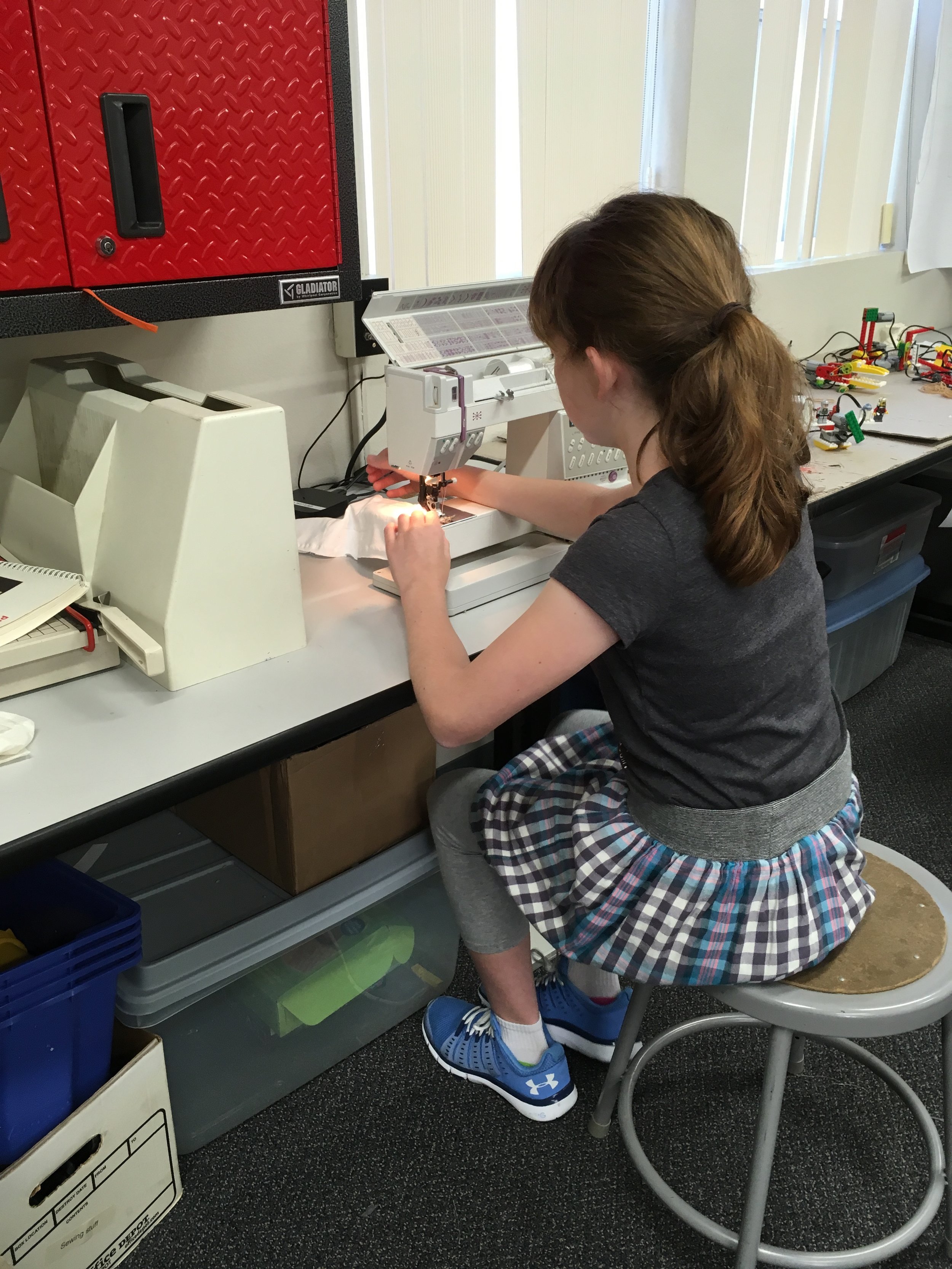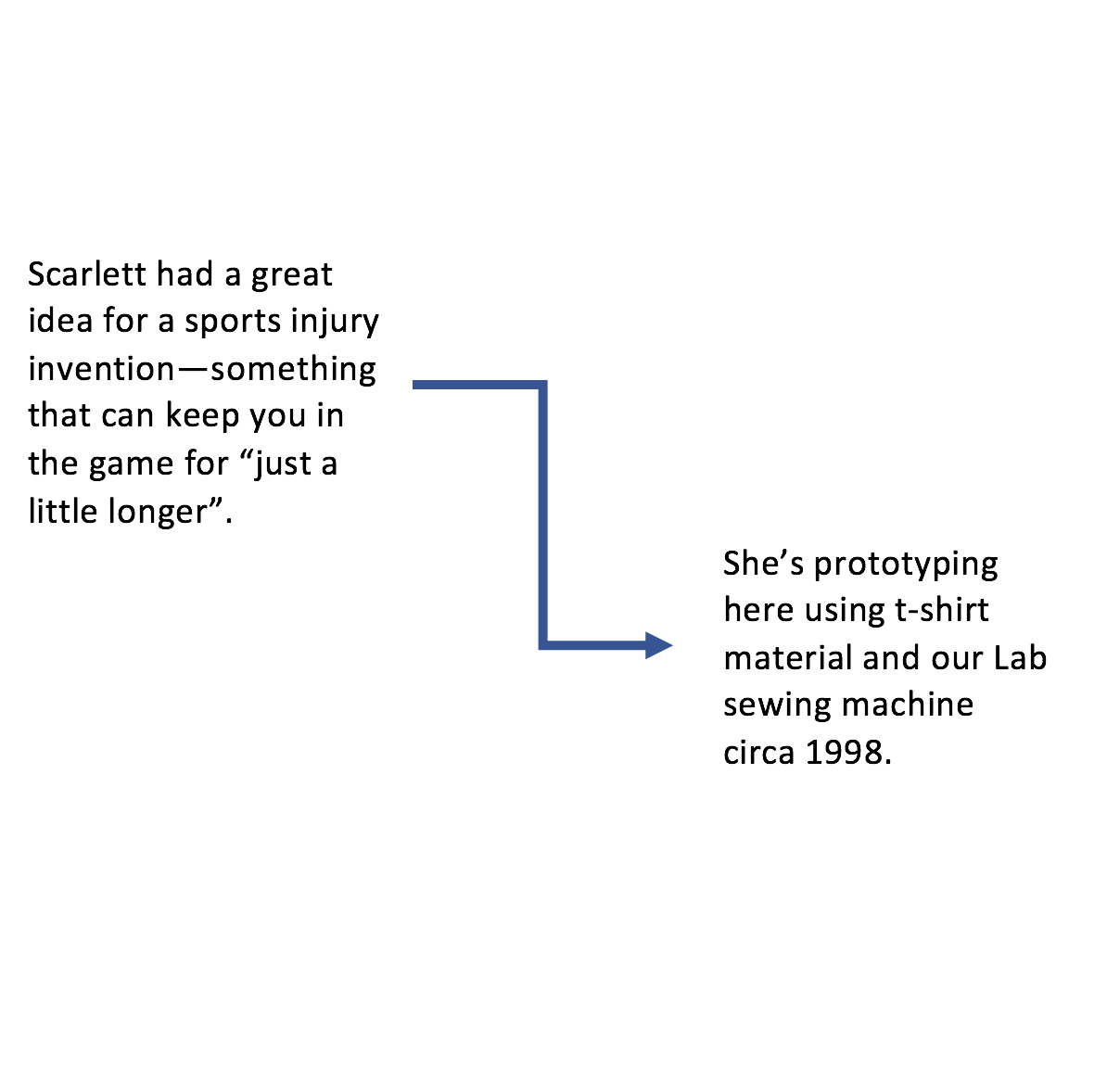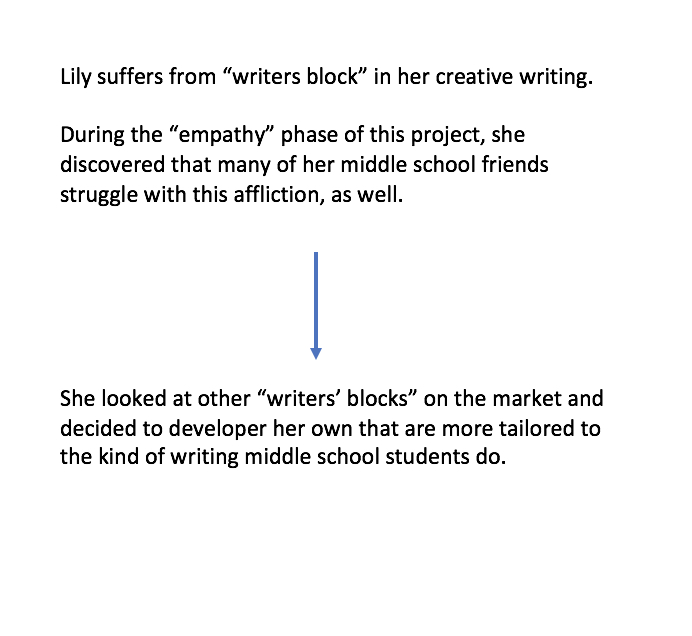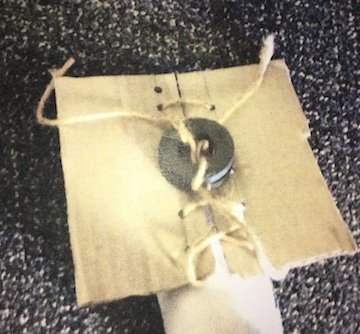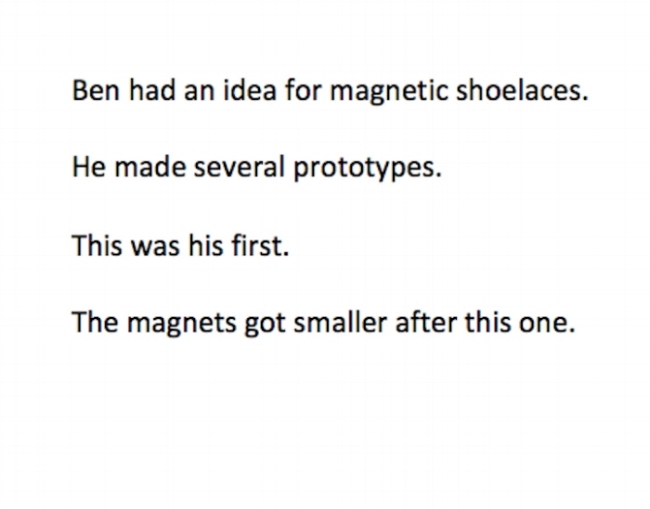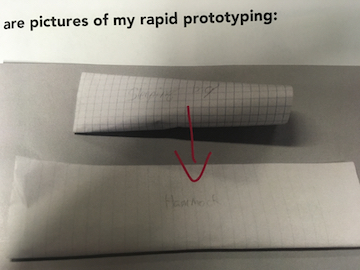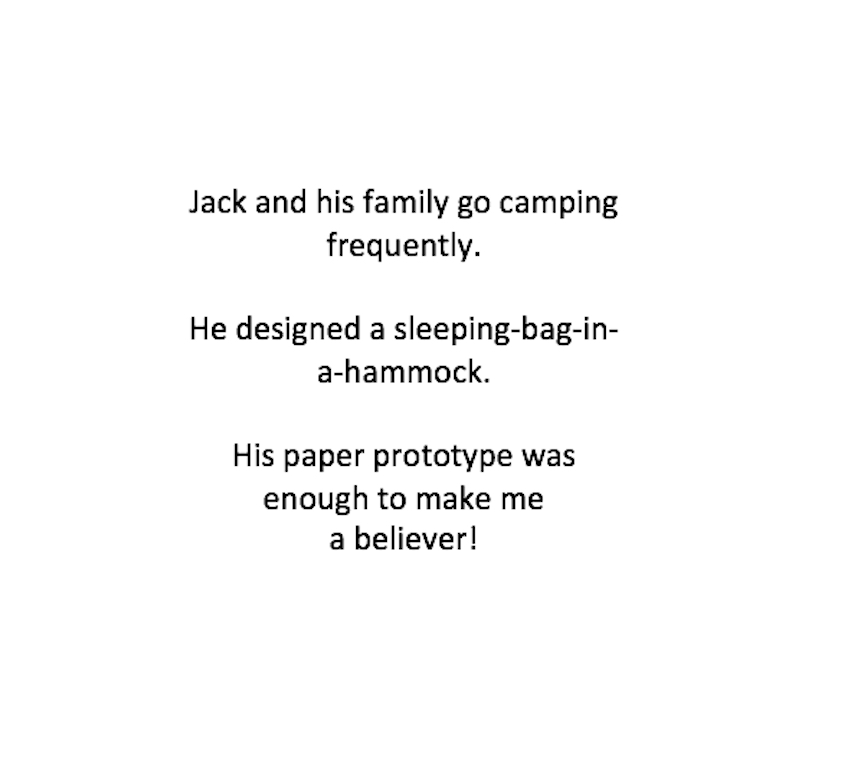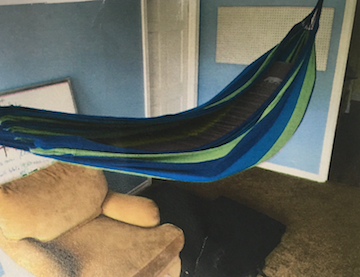6TH GRADE SHARK TANK
In response to a request from parents, 6th Grade Shark Tank was designed for that class of students who missed 4th grade Shark Tank. Frankly, I can see a Shark Tank project for all classes, but we'll have to call it something else each time. Students love Design Thinking, they love to create, and they love working in The IDEA Lab.
The most difficult part of this project is keeping students from "inventing" an object before they get to the Design Thinking Process.
You can download our Design Workbook here.
Students begin with a unique company name. They are told that, like Apple, Google, and Mattel, the name doesn't have to have anything to do with the invention. I advise students to think of a broad enough company name so that, should they change their mind about their invention, the name will still work.
Along with a company name, they must design a logo.
The next step (a letter to the US Patent and Trademark Office) was used as "a typing test". That means that I said "Go!" and all of the students started to type their letter. I watched each student type so that I could spot the students who do not yet have keyboard awareness and report that to parents. We teach typing in The IDEA Lab in 2nd and 3rd grade. If you are in 6th grade and can't type, you might want to pick up that skill before moving on to high school. I let parents know and give them ideas for how their student might gain the skill of typing.
The Design Thinking of this project proceeds with students creating questions for their demographic group interviews. (Demographics is a concept they learned in the Future City Project.) .
Designing for Specific Users
Students created questions in a Google Docs Form and sent them out to all of their friends at the school and beyond. Some students interviewed their target audience in person. Joy, for example, wants to design an educational toy for 6-8 year olds. She designed and used interview questions and then she interviewed her potential users in person at the school.
State the users' point of view
This is where you tell the story of your user. What is s/he like? What does s/he need? How does your user want to feel? You have to truly empathize with your user to get the Point of View.
Create Your Problem STatement
Once they understood their potential buyers by asking them targeted questions and analyzing their answers to state a point of view, students created their problem statements. They look like this:
Lakshmi: Kids 4 - 16 years old need a way to get all of the liquid out of their beverage in a way that makes them feel accomplished.
Caroline: Readers need a way to read their book in the dark easily in a way that makes them feel comfortable.
Joy: Kids need a way to work-out parts of their brain in a way that makes them feel happy and confident.
Lily: People with writer's block need a way to keep their story interesting in a way that makes them feel that they can support details and use precise language.
Rapid Ideation is the Next Step
Unfortunately, I missed this step because I was in Baltimore for the Annual NAIS Conference. Sir Ken Robinson was definitely worth the price of admission! But I was sorry to miss this important stage of the 6th grade project. Their notebooks are filled with ideations!
Let the Prototyping Commence!
And, finally, the Day of The Sharks Arrived!
Elita vs. The Sharks
A number of students created board games this year. Some got funded because they were exceptionally cute, educational, clever -- but some did not. Being creative is hard! If we play Trivial Pursuit at home, it's hard to think of a game that doesn't look like that game.
If you are a fan of Shark Tank, you know that all of the Sharks have different personalities. Our Tank was no different. It lends a bit of realism to the project when the students cannot predict what the Sharks will say, how they will react, what questions they will ask.
Much like Future City, this is Oral Presentation 2.0.
Jasper and the Mop
Jasper's family was getting ready to move when we were in the midst of brainstorming our innovations. His mother, on her hands and knees cleaning the floor said to him, "I wish you would invent something that would help me clean this floor!"
So, he did!
Jasper used his recollection of attaching a 9V battery to a CPU fan to create his innovation.
Jack in the Tank
Jack's idea combined his love of hats and his need to keep track of his electronic do-dads. His baseball-style hats had pockets for the iPhone, the charger plug and the cable.
The Sharks liked it!




